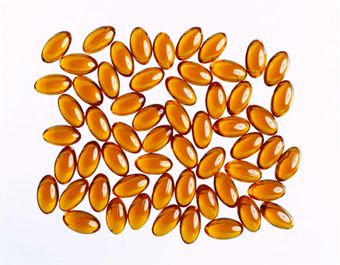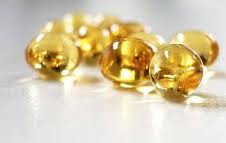Tocopherols (Vitamin E)
Vitamin E is a vitamin that is fat-soluble and comes with antioxidant properties. There are eight different forms in which vitamin E may exist:
- Alpha tocopherol
- Alpha tocotrienol
- Beta tocopherol
- Beta tocotrienol
- Gamma tocopherol
- Gamma tocotrienol
- Delta tocopherol and
- Delta tocotrienol
The most active form of vitamin E found in humans is the alpha-tocopherol, and it is for this reason that when daily allowance and dosing recommendations they are made, they are usually made in Alpha-Tocopherol Equivalents, or ATE. Vitamin E supplements may be found in synthetic or natural forms, the latter of which tends to be labeled with a “d,” such as in d-gamma-tocopherol. The synthetic forms, on the other hand, tend to be labeled with “dl,” such as in dl-alpha-tocopherol.

Treating Different Health Conditions
Vitamin E has often been proposed as part of a treatment or prevention plan for a number of different health conditions, usually due to its antioxidant properties.
However, outside of treating the rare vitamin E deficiency, there is no scientifically proven medicinal usage of the supplementation of vitamin E outside of maintaining the recommended dosage. Ongoing research is current, especially in treating heart disease and cancer.
There have been recent concerns associated with how safe it is to take high doses of vitamin E supplements. The idea has been proposed about whether there is an increased risk of bleeding, especially with those who are also taking aspiring, heparin, warfarin and other blood thinners, or in patients who are deficient in vitamin K.
Tocopherols? Get Remedies Fast!
Evidence that has recently come to light has come to light that taking high doses of vitamin E supplements might increase the risk of death from “all causes,” though a separate study said there was no increase towards mortality for women who supplemented vitamin E on a daily basis. Caution is warranted.
Uses Based on Tradition or Theory
The following list are uses that are based on scientific theories or traditions. More often than not, they are not fully tested in humans, meaning that the effectiveness and safety are not necessarily proven. Some conditions are potentially very serious and should only be evaluated by a qualified professional.
- Abortifacient
- Acne
- Aging prevention
- Aging skin
- Air pollution protection
- Allergies
- Amiodarone pulmonary toxicity prevention
- Bee stings
- Benign prostatic hypertrophy
- Beta-thalassemia
- Blood disorders (porphyria)
- Breast pain or inflammation (mastitis)
- Bronchopulmonary dysplasia in infants born prematurely
- Bursitis
- Cardiomyopathy
- Celiac disease
- Chemotherapy extravasation
- Chorea, or chronic progressive hereditary
- Congestive heart failure
- Crohn’s disease
- Cystic fibrosis
- Dermatitis
- Diaper rash
- Digestive enzyme deficiency
- Doxorubicin hair loss
- Duchenne muscular dystrophy
- Dyspraxia
- Energy enhancement
- Exercise recovery
- Frostbite
- Gastric ulcer
- Granuloma annulare
- Hair loss
- Heart attack
- Heart transplant rejection
- Hereditary spherocytosis
- Huntington’s disease
- Hypertension
- Impaired glucose tolerance
- Impotence
- Leg cramps
- iver disease
- Liver spots
- Lung cancer
- Male fertility
- Menopausal symptoms
- Menstrual disorders
- Miscarriage
- Mucositis
- Muscle strength
- Myotonic dystrophy
- Neuromuscular disorders
- Nitrate tolerance
- Oral leukoplakia
- Labor pain
- Pancreatitis
- Peptic ulcers
- Physical endurance
- Poor posture
- Post-angioplasty restenosis
- Post-operative recovery
- Pre-eclampsia
- Radiation induced fibrosis
- Reperfusion injury protection
- Restless leg syndrome
- Sickle cell
- Skeletal muscle damage
- Skin damage
- Skin disorders
- Sperm motility
- Sunburn
- Thrombophlebitis and
- Ulcerative coloitis
- Dosing
The doses as provided in this section are based on research by scientists, traditional use, publications or expert opinion. There are many supplements and herbs that have not been fully tested, meaning the effectiveness and the safety of taking them are not necessarily proven. Some brands may differ in how they make their supplements, using other ingredients, even with its own brand. They may not apply to all sorts of products. Always read the product labels.
Dietary Sources
The following foods are known to contain vitamin E:
- Eggs
- Fortified cereals
- Fruit
- Green leafy vegetables
- Meat
- Nuts
- Nut oils
- Poultry
- Vegetable oils
- Argan oil
- Olive oil
- Wheat germ oil and
- Whole grains
Cooking may destroy some of the vitamins.
Adults
It is believed that most adults within the United States already have a sufficient amount of vitamin E from their dietary sources. The recommended allowance for adults over the age of 14 years is 15 milligrams ATE. The recommended allowance for pregnant women of any age whatsoever is about 15 milligrams ATE of vitamin E per day, with breastfeeding women of any age whatsoever needing 19 milligrams per day.
Children
Children between the ages of one and three years is six milligrams ATE per day. For children between the ages of four and eight years is seven milligrams ATE per day. For children between the ages of nine and 13 years is 11 milligrams ATE per day. Anybody over the age of 14 years is to receive 15 milligrams ATE of vitamin E per day. Pregnant women of any age at all should receive 15 milligrams ATE per day, and those who are breastfeeding, regardless of the age, should obtain about 19 milligrams ATE of vitamin E per day. No amount has been approved for infants.
Safety
It is not the position of the United States Food and Drug Administration, or FDA, to approve the regulation of supplements and herbs. Therefore, the effects may vary, there is no guarantee for the purity or the safety of the products, and there is no guarantee about its strength.

For this reason, it is vital to always read the labels on the product. For those who suffer from a medical condition or are taking any other supplements, herbs or drugs, it is important to go see and consult with a qualified professional before taking on a new therapy. Also make sure to consult a doctor at once if experiencing any side effects.
Side Effects and Warnings
Evidence that has recently come to light has come to light that taking high doses of vitamin E supplements might increase the risk of death from “all causes,” though a separate study said there was no increase towards mortality for women who supplemented vitamin E on a daily basis. However, these results are often criticized by experts who said that they are based on recalculations of results from earlier studies of mixed quality and with variable results. However, it is still currently the best evidence available and as it stands everybody should take caution with taking vitamin E.
It is considered to be safe to take vitamin E supplements for a short period of time, only up to the recommended upper intake level. However, vitamin E has the potential of being unsafe when doses are taken orally at levels exceeding that of which is recommended. The RDA obtained through food consumption is generally thought to be both safe and beneficial.
Skin Reactions
Contact dermatitis and other kinds of skin reactions have previously been reported after using topical vitamin E preparations, including deodorants that have vitamin E in them or ointments. Rarely, it has been shown that vitamin E supplements can cause diarrhea, abdominal pain, diarrhea, nausea, or symptoms similar to that of influenza. There also seems to be an increased risk of developing necrotizing enterocolitis when taking a large dose of vitamin E.
In rare cases, there has been associations between the supplementation of vitamin E and gonadal dysfunction, as well as diminished kidney function.
Overdosing
Taking a high dosage of vitamin E on a regular basis is also believed to increase the risk of bleeding, and this is because the vitamin inhibits platelet aggregation and there is the antagonism of clotting factors dependent on vitamin K, especially with those who are deficient in the vitamin. Also associated with vitamin E supplementation, though rare, are fatigue, headache, dizziness, blurred vision and weakness.
People who suffer from retinitis pigmentosa should not consider taking vitamin E orally because it does not seem to slow down the decline of vision, and it actually seems to be associated with losing visual activity on a more rapid basis. This theory, however, has been questioned.
Pregnancy and Breastfeeding
There are numerous prenatal vitamins that are known to have small levels of vitamin E in them. It may be preferred to take natural kinds of vitamin E rather than the forms that come synthetically.
It is not recommended to take more vitamin E than the level of Recommended Dietary Allowance states that otherwise healthy pregnant women should have. Outside of this recommendation, there is currently no sufficient evidence that shows the safety levels of taking a higher dosage of vitamin E, whether injected, topical or oral, throughout the duration of breastfeeding and pregnancy. Therefore, it is not recommended to exceed such recommended dosages.

No Comments